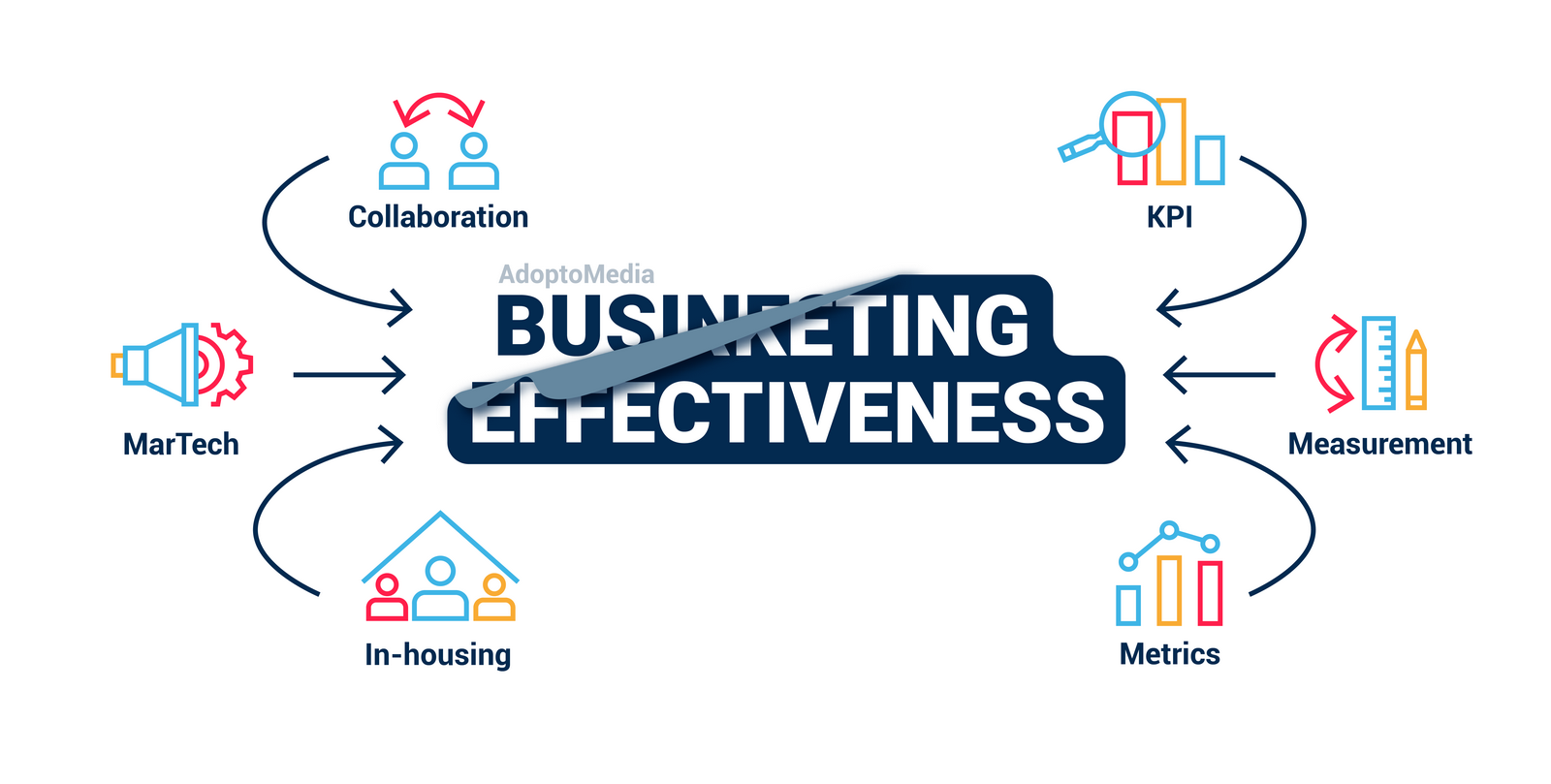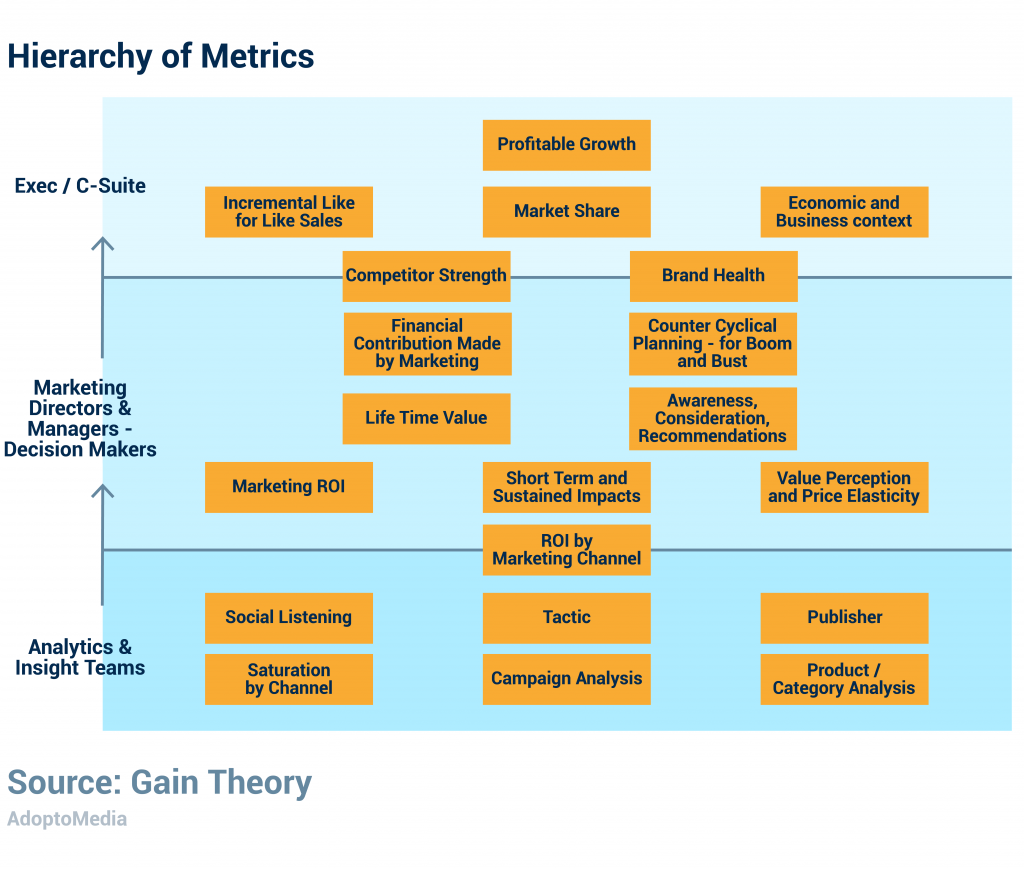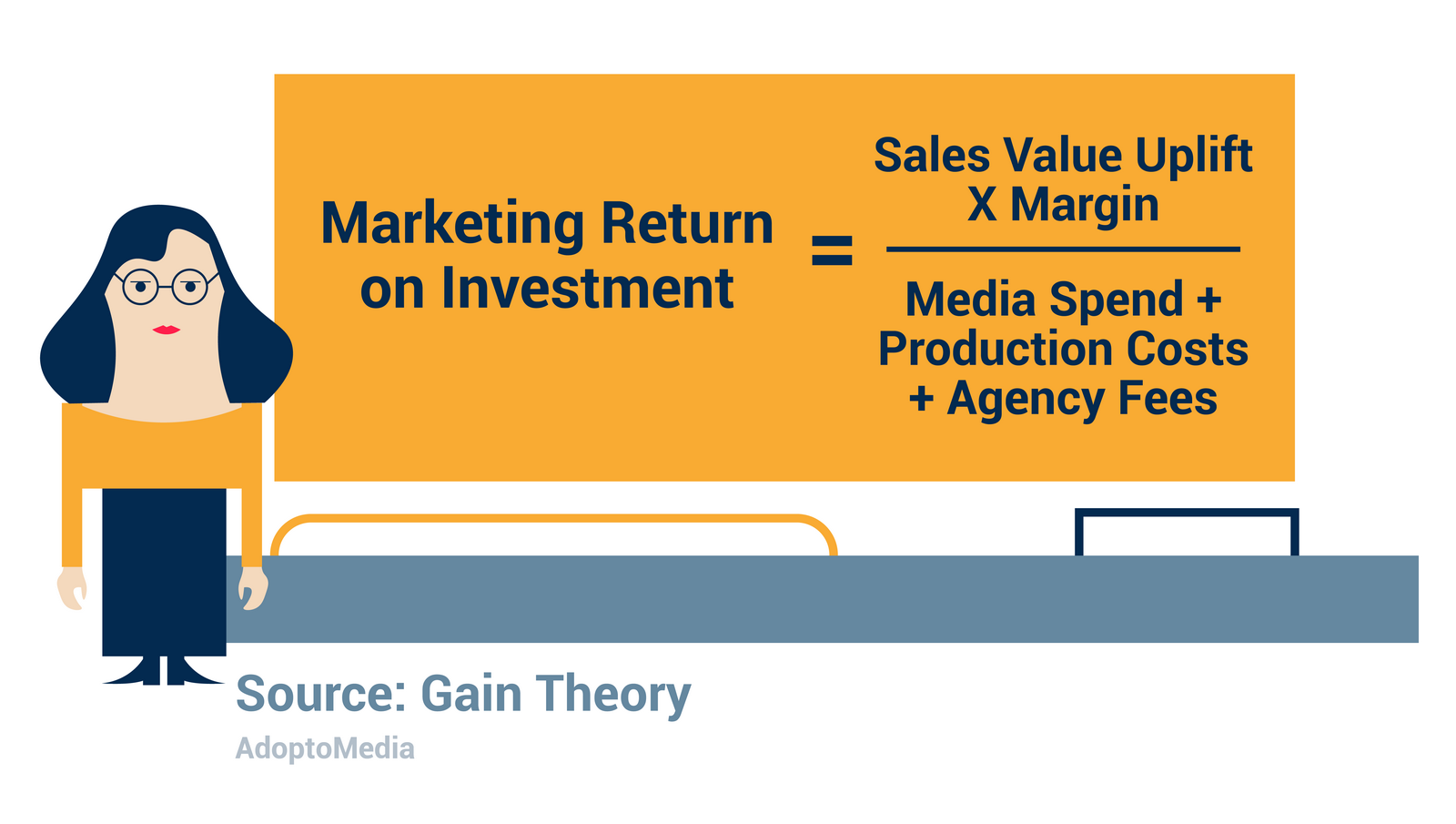
There is hardly an organization that is completely satisfied with their abilities to assess marketing activity results, and in this age of technology and changes companies should choose wisely and act quickly to keep pace with trends and generate business growth. A global consultancy Gain Theory published a white paper on marketing effectiveness that provides information on how to measure and maximize the impact of marketing activities. In this article, we cover the most informative and interesting parts of their paper, which includes insights from the marketing top managers of 40 large UK brands that together spend over £7 billion on advertising.
The key to success and business growth is the right marketing strategy, it will help to create the right culture, make better decisions and wisely invest. It requires specific knowledge and resources, and the common challenges include not having the right people for the job or complexity of the subject itself. With the right motivation and collaboration within a company it will be easier to achieve better effectiveness. And here are some advice that the author gives us to improve marketing performance.
Do the basics right: there is no doubt innovation might boost your performance, but simply by improving what you have you can also get better results without spending extra money. Innovations, on the other hand, require much investments before they start bringing benefits.
Remember about the big picture: granular data is of course useful, but don’t forget about the metrics like economic forecast or market size because it’s more important than ROMI of a single channel.
Match metrics to strategy: choosing the right KPI will make it easier to evaluate success.
Anticipate: try to predict which metrics are going to be important in the future.
Stop standard reports: one-size-fit-all approach will not give you the best results, so you need to provide answers to specific questions and understand the hierarchy of metrics.
What is marketing effectiveness?
To properly and successfully measure marketing effectiveness we need first to agree on what it is. Even though the interviewed marketers gave various answers, they all had something in common — marketing budget should contribute to the company growth and help to achieve its overall goals. Since the term itself reduces the importance and influence of marketing activities for a company, it should actually be changed to business effectiveness. And this term is actually used in the white paper to emphasize the importance and potential of marketing.
Marketing Effectiveness is about more than just marketing
Each company will have different metrics depending on the goal of marketing activities. And such metrics should be defined in the very beginning. Even though companies all need one thing — growth, they get there by different paths. Anyway among various approaches there were three things all companies had in common:
focus on a few KPIs;
consistency in their measuring approach;
constant evaluation of techniques for measuring effectiveness.
Importance of cooperation
To successfully implement a marketing effectiveness program, all company departments have to share the right motivation and a single goal. Before you start this journey, set a common purpose, agree on shared metrics and objectives, discuss what your expectations for the marketing efficiency program and define success. We have already covered the potential and importance of collaboration between Marketing and Finance, as well as the obstacles to greater synergy between the departments. However, it’s not just those two, — everyone needs to work together to achieve better results. In some companies, achieving this can be difficult because their brands are created to be competitive rather than cooperative.
Marketing and Finance should work and make decisions together from the beginning. To get the necessary support and funding from CFOs, marketers should learn to communicate their needs to Finance department, that wants to hear more than just about a necessity to justify large investments. Finance needs transparency, clear picture, proper reports, understanding of expected results and more than one evidence that a certain new technology will improve effectiveness. Marketers should also learn from their mistakes and be open for change.
How far ahead are you?
There are three stages of Business Effectiveness implementation progress. All the interviewees were asked to rate where they stand in terms of company’s efforts on the scale from 1 to 10. It turns out that 10% of companies lag behind, 30% are somewhere in the middle and the majority of 60% are well ahead in the process. Nobody, however, ranked their company 10; some thought they were close to it. What all interviewees have in common is they realise their companies cannot stop where they are. Those who lag behind need to catch up with others, while those ahead have to keep up the work to maintain the same level. Most interviewees noted that their efforts to improve Business Effectiveness were becoming increasingly sophisticated every year.
For companies that are ranked lowest the key is not to rush and implement changes gradually because they might not handle the full scale of innovation, have the necessary skills or experience. The best decision is to have both external experts and an in-house team, that actively participates in the process, not just supervises it. At this stage there are only standard reports on past events and sometimes current situation and no structural data storage.
Those who are in the middle of the scale make decisions and take actions based on analytical researches, try to understand what caused the results they get and forecast future performance. They start to implement Test and Learn technique and have better data management. To improve the situation such companies should speed up reporting process.
Companies ranking highest have advanced analytics, well developed Test and Learn process; they wisely use consulting services and have resources to act after getting insights. But there are challenges at this level too. Firstly, they need to synchronise the implementation of changes in all departments. Secondly, they need to stay up to date and constantly evaluate the effectiveness of techniques they use. However creating the right atmosphere of trust, understanding and cooperation is much more important than any advanced technique.
Another crucial thing for successful measurement of effectiveness is understanding the hierarchy of metrics and choosing the right ones. In the picture below you can see what metrics have more important than others and who in the company focuses on what aspects.

You should understand what you really need to measure, why you measure it and how it contributes to the company’s general strategy. For most companies profitable growth is top priority, but metrics are connected and impact each other. For example growth can be achieved by increasing market share, which in turn may be driven by brand strength improvements and it can be driven by better marketing activities. You also need to agree on what success should look like and set up proper communication between departments and executives.
One of the metrics most often monitored by companies is market share, but to fully understand what influence it has you cannot consider it in isolation.
Price elasticity, which reflects how price change affects demand, is also monitored because it has a long-term effect that often outweighs that of advertising. It happens because marketing affects only some part of sales, while price change affects all sales. Price elasticity can be lowered by working on brand strength through consistent advertising.

One KPI that all interviewees track is ROMI (return on marketing investment). It’s an important metric, but Gain Theory considers it an intermediate one. When it comes to ROMI the challenge is to understand what drives it and find a way to maximize it without damaging long-term strategy. Usually it is calculated as shown in the picture.

But this formula may vary depending on business. And the article author points out three rules to follow when calculating ROMI.
Sales Value Uplift should include halo effects, synergies and ideally a view on the long term (through evolving base for example).
Focusing on products or services with high margin will drive better ROMI.
Media spend should be diverse and include not only channels that have a direct impact on sales but also those that enhance the effect of other media channels. However don’t base your strategy on ROMI. First develop the strategy and then use ROMI to allocate budget between channels.
After you have decided what you need to measure, choose the right approach to team building and the appropriate tools to measure business effectiveness.
If you are looking for tools to measure and maximize your company’s ROMI, you can try AdoptoMedia. Our tool not only calculates ROMI in real time but also forecasts it based on data for past periods. With our tool, you can measure the contribution of each channel in your marketing mix to sales or other KPIs, optimize media budget to achieve target business results with minimum spendng, and increase your ROMI by 15-30%. Our software is seamlessly integrated in the company’s IT infrastructure to automate marketing activities.


